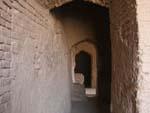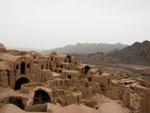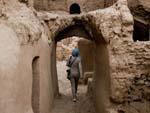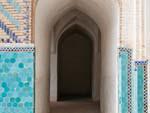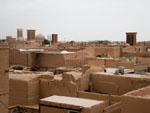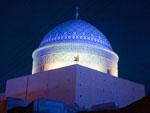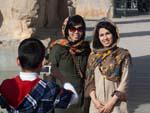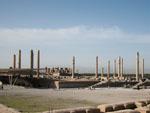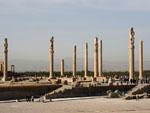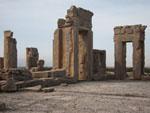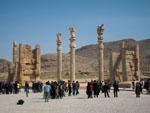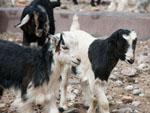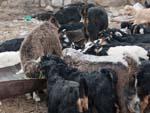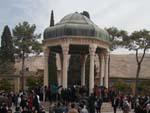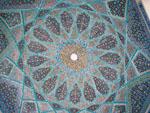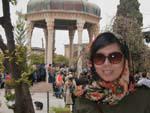We decided to spend our second day in Yazd doing a day trip to surrounding towns – Meybod, Chak Chak and Kharanaq.
thydzikgooglemap(http://sonyaandtravis.com/maps/outer-yazd-iran-meybod-chak-chak-and-kharanaq.xml)
- Meybod
- Chak Chak
- Kharanaq
Meybod
About forty minutes north of Yazd, Meybod was our first stop. Like Yazd, it is also a desert city and much of its buildings are made from mud-brick. We visited the Narin Qal’eh (Narin Castle), a mud-brick fort which incorporates mud-bricks from various periods from Sassanid, Achaemenid to Islamic. From the top, it provided us a view of the town of Meybod.
In Meybod we also visited an icehouse, very similar to the one we saw in Abarqu, an old post office and a once bustling caravanserai; a roadside inn where travellers could rest and recover from their day’s journey. The pigeon towers was our last stop in Meybod, a tower that once hosted 14,000 pigeons – inside it was quite impressive and unique.
thydzikgooglemap(http://sonyaandtravis.com/maps/yazd-iran-meybod.xml,s)
Chak Chak
The village of Chak Chak was our next stop. It is known to be the most sacred of sites for Zoroastrians. Chak Chak is literally built on a mountain cliff in the middle of the desert. The name ‘Chak Chak’ is the Persian word for ‘drip drip’ due to the ever-dripping spring located at the mountain.
The main attraction is the Zoroastrian temple guarded by two bronze doors on top of the cliff. Inside is a fire which burns eternally. Each year thousands of Zoroastrians visit this temple from June fourteen to eighteen. Tradition requires that on approaching Chak Chak, when pilgrims see the temple, they must walk the remaining distance.
thydzikgooglemap(http://sonyaandtravis.com/maps/yazd-iran-chak-chak.xml,s)
Kharanaq
Kharanaq is another town in the Yazd District which is believed to have been occupied for more than four-thousand years. This spot was a particular favourite of mine as there was barely anyone around and the whole ancient village made completely of mud-bricks (no longer occupied) made for a very eerie atmosphere. We were so impressed by just how extensive the old village was – and even got lost in the maze heading back towards the car. The site also consists of a Qajar era mosque and a shaking minaret.
thydzikgooglemap(http://sonyaandtravis.com/maps/yazd-iran-kharanaq.xml,s)
At the end of our tour, our driver Ali took us back to Yazd where we had a late lunch and departed Yazd on a four-and-a-half hour bus to Esfahan.









































































































